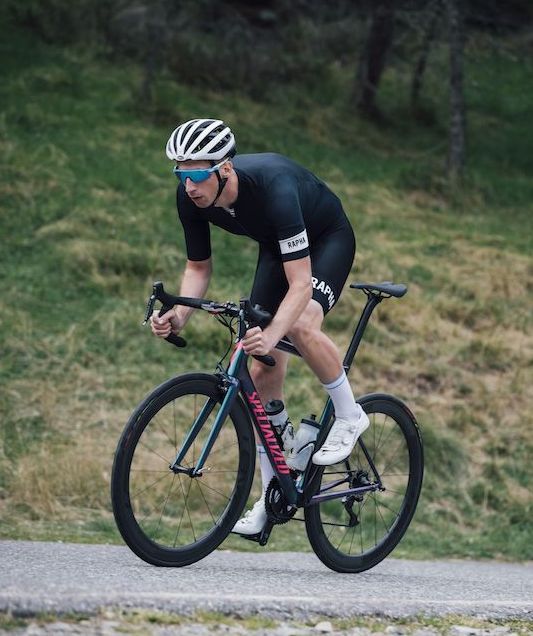Taking the pain: What does it mean to suffer?
If you want to win races, you have to be able to tolerate pain. But what does suffering on a bike really mean? Can it be measured, tested and trained? Tom Daly investigates

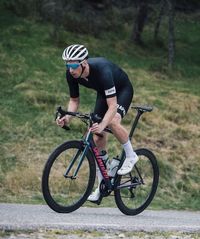
Some years ago, while browsing cycling articles online, I began saving images of Sean Kelly with pain etched all over his face. These photos were, it struck me, archetypal portraits of suffering.
They intrigued me because, like great works of art, they seemed to offer a tantalising glimpse into the human condition pushed to an extreme, challenging my imagination.
>>> Let’s talk about sex: How to account for the gender performance gap?
I could only wonder at them and speculate on the depth of the suffering betrayed by Kelly’s grimace. I wondered, where does my ability to suffer rank by comparison? Why does one cyclist willingly endure horrible pain for the sake of a bike race while others decide it’s too much to bear?
Everyone agrees that suffering is synonymous with cycling, and that the ability to tolerate pain is a vital part of performance. Fausto Coppi, who many consider the greatest of all, put it simplest: “Cycling is suffering.” Eddy Merckx added a little more explanation: “Cyclists live with pain. If you can’t handle it, you will win nothing. The race is won by the rider who can suffer the most.”
The American ex-professional Bob Roll said that “suffering is the coin of the realm in cycling”, and his fellow countryman and Olympian Scott Martin added: “To be a cyclist is to be a student of pain. At cycling’s core lies pain. If you never confront pain, you’re missing the essence of the sport.”
It’s all very well great cyclists commenting on the importance of suffering, but how does it actually help us? It is difficult to find instructive insights into the experience from pros. Even the most articulate among them don’t seem able.
The latest race content, interviews, features, reviews and expert buying guides, direct to your inbox!
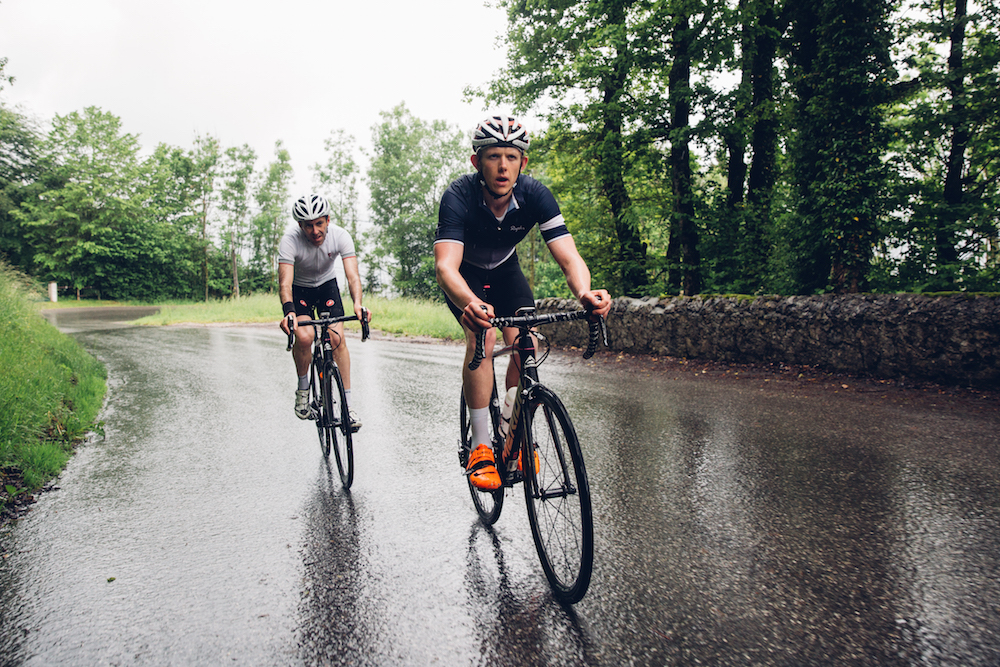
After setting his Hour record of 49.431km in 1972, in Mexico City, Merckx simply said: “I will never try it again.” Twenty-eight years later, after beating Merckx’s record by 10 metres, Chris Boardman expressed a similar sentiment: “If I’d known how hard it was going to be, I would never have attempted it. The last 15 minutes were terrible.”
There is no way of measuring suffering despite all the data available to modern coaching. The best parameter we have, lactate concentration in the blood, merely coincides with discomfort; no direct link between lactate and pain (so-called ‘lactate burn’) has ever been proved.
We have computer-based scales such as ‘Intensity Factor’ and ‘Suffer Score’ but these are calculated by algorithms written by developers — they don’t get near to distilling what we see etched on the faces of riders like Kelly.
The truth is, we have no adequate metric for suffering. It remains an enigmatic and elusive feature of our sport. Each rider’s suffering is their own — we cannot compare it to our own, we can only imagine. I might like to believe I’m more pain-resilient than another rider, but I’ll never know for certain.
Psychology of suffering
Though the ability to manage suffering is without doubt a key requisite for success, it still remains a neglected part of preparation. Mental training is rarely addressed in a structured way. As cycling writer Graeme Fife put it in his essay ‘Ex Duris Gloria’ (‘Glory through Suffering’), “Suffering is one thing; knowing how to suffer is quite another.”
Nonetheless, progress has been made recently in psychology, in terms of providing practical guidelines.
A popular theory, stemming from the work of Professor Tim Noakes at the University of Cape Town, suggests that the final limiter of effort is a ‘central governor’ in the brain, which shuts down effort to protect the body from being pushed, by the athlete, to dangerous levels of exhaustion. (It is thought that Tom Simpson’s death on Mont Ventoux may have resulted from amphetamines inhibiting his brain’s central governor, allowing him literally to ride himself to death.)
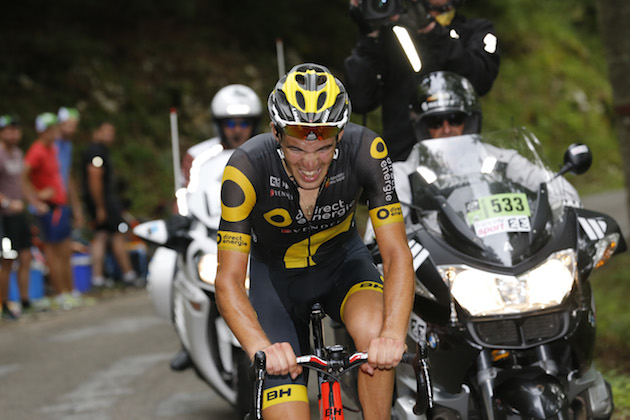
According to this theory, the ability to manipulate the central governor — to raise the level of exertion at which it kicks in — is the marginal (or perhaps even substantial) gain that separates winners from the rest.
However, even Noakes himself, writing in the journal Frontiers of Psychology in 2012, acknowledged: “How athletes and coaches achieve this winning mental attitude is the great unknown.”
A contrasting school of thought, sceptical of the central governor theory, is being developed by various researchers including Professor Samuele Marcora of the University of Kent. Marcora conducted an experiment in which he asked cyclists to ride to exhaustion.
Then came the trick: as they hit their perceived point of no return, he urged them to ride as hard as they could for another five seconds — during which they managed to put out three times higher power.
Watch: How to ride a long climb
It proved that a simple mental strategy could triple riders’ output after they’d felt they were at the end of their performance tether. The implication is that the ultimate limiter of performance is perception of effort rather than a physiological barrier.
Train to suffer
Many successful riders have independently developed methods for dealing with pain which are now being formalised by psychologists; we can learn from both sources.
Some of these are classified as ‘distraction or dissociation’ methods; for example, picking a wheel to hang on to when we are on the verge of cracking on a big climb — focusing on the wheel distracts from the discomfort.
Australian time triallist Felicity Wardlaw described a bizarre dissociation technique that helped her to become national champion:
“I developed a series of power thoughts, power words and power images. I imagined I was a panther.
"I could see myself looking through the eyes of this panther, in that I was fast, relaxed, smooth, powerful and lean. I practised this during several training sessions, and during the Nationals I really used this to overcome the pain and transfer it away from my legs.”
When I caught up with Sean Kelly to ask him about suffering, he described a motivational technique that Marcora classifies as ‘motivational self-talk’.
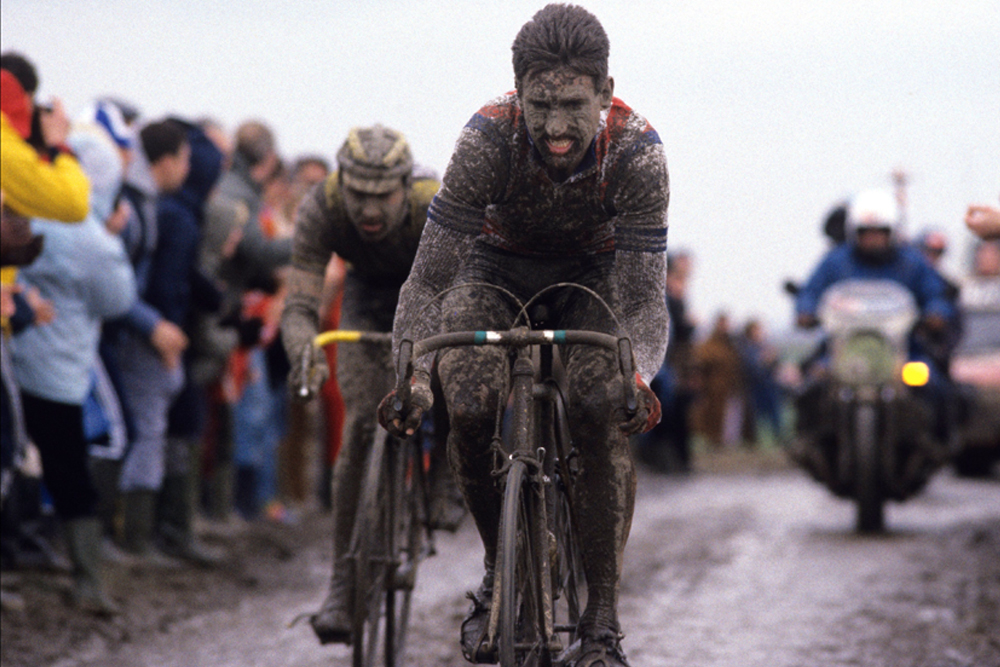
When nearing his limit, Kelly tried to convince himself that everyone else was suffering at least as much as he was. Cycling champions and psychologists agree that, whatever strategy is used, you have to regularly train and race with pain in order to manage it well. Pain never gets less painful, but we get better at tolerating it.
In his book Faster, multiple time trail champion and CW writer Michael Hutchinson puts it as follows: “That it ‘hurts’ is almost neither here nor there. You try to tolerate it, embrace it, put it in a box, luxuriate in it, turn your back and go to your happy place, deal with it in whatever other way you can. You have to go back again and again, and while you get better at it, it never gets easy.”
The implication is clear: every racer should incorporate mental training into their preparation. In my coaching work (mccm.iwsi.ie) I prescribe a sprint workout based on Marcora’s theory of tricking the mind to go beyond its perceived limits: three 15-second full-gas sprints to a road sign, holding nothing back, with eight-minute recoveries.
When you reach the sign on the last sprint, no matter how exhausted, surge again for at least three pedal revolutions. Most, to their surprise, find that they can do the extra surge; with purposeful training, they can extend their
preconceived limits.
Similarly, based on the ‘self-talk strategy’ described by Marcora (see left), I help prepare racers for key events by identifying likely make-or-break scenarios in which self-talk motivation might make a difference.
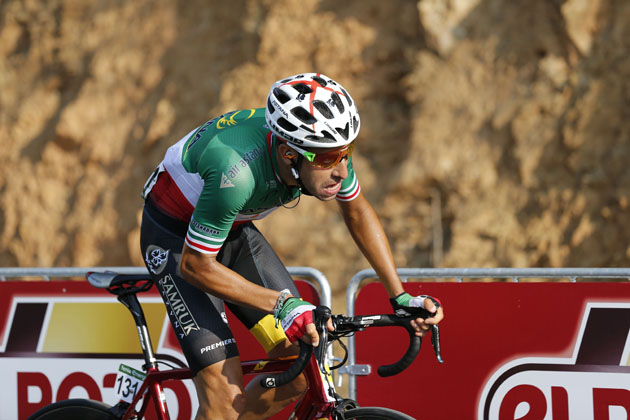
In a long race that is going to end in a bunch sprint, for example, we would identify a landmark, perhaps 5km from the finish, when the rider will begin to use both motivational and instructional self-talk along the lines of: “Everyone else is just as exhausted as I am… There are only 10 minutes left… This is the time to dig deep… If you just sit on a wheel you’ll finish in the bunch and waste the last two hours of effort… Start moving up in the bunch…. Make the effort… Move on the sheltered side.”
The message is that every rider can get deeper into the pain cave through mental training, which can make a crucial difference.
Though our knowledge of how to manage suffering is improving, there is an aesthetic or transcendental element — the part that is beyond logical explanation.
This is best described as a relationship and rapport with pain that is outside of observable human experience and comprehension. Some even describe it in terms of beauty. British pro Mark McNally puts it thus: “[Suffering] can be so cruel and so beautiful at the same time. The contrast between the pain and the euphoria it brings is what makes it seem more beautiful.”
Sports writer Bill Gifford agrees: “Suffering is essential to the beauty and mystery of the sport. It gives the ride meaning. The greatest racers have a love of suffering that goes beyond any ratio of sacrifice to payoff.”
In other words, you have to learn to love suffering not just for the rewards it bestows but for its own sake too — perverse as that may seem.
Others refer to it in spiritual terms. Sam Marye Lewis, writing about ‘The Zone’ in the Journal of Sport Psychology, describes suffering as “a spiritual experience, a transcendent state, going beyond the self, a mystical experience.”
It is probably just as well that science can’t explain suffering. Its enigmatic nature ensures that cycling will never be reduced to a game of numbers.
This mystery is why I find those images of Kelly so intriguing, but it’s also an aspect of the sport that affects riders at every level, from first-time sportive riders to seasoned racers. Exploring pain is a key part of what we do.
Are we able to reach degrees of suffering anywhere near to those tolerated by the likes of Kelly? Who knows; we have no way of measuring it, and I for one am thankful for that.
‘Hard labour on the farm taught me how to suffer’
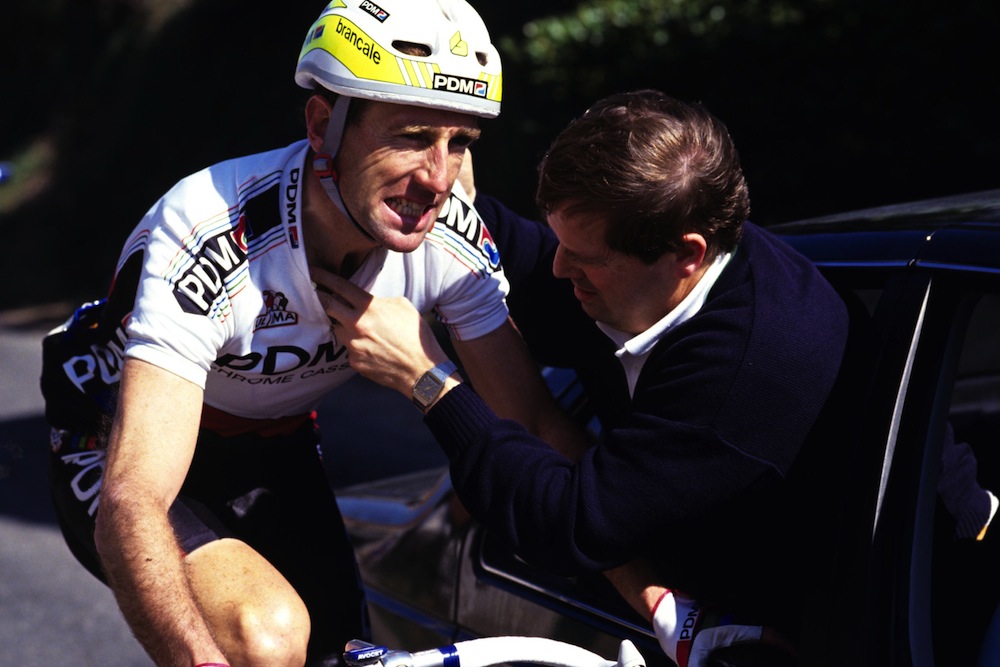
Sean Kelly was ranked number one in the world from 1984 to 1988. He won countless major races including the 1988 Vuelta a España and took multiple stage wins in Grand Tours
CW: How much does the ability to suffer separate successful riders from the rest?
Sean Kelly: The ability to suffer is very important — you just can’t get results without it. Everybody suffers in cycling but the great riders can suffer that bit more.
CW: Is it a natural ability, or can you train yourself to suffer?
SK: Some people have it naturally, but yes, you can also train yourself to suffer more, and everybody can improve that ability. You train it by pushing the barrier up a little more and more each time over many weeks and months.
CW: It has been reported that, in the early days of your career, when the going got tough, you endured because you didn’t want to go back to working on the farm if you failed. Is that true?
SK: Yes. I did very hard physical labour on the farm from a young age. There was a lot of hardship and difficult conditions. This definitely was a motivation. This kind of background also probably helped me to develop mental endurance and resilience to pain.
CW: Are some modern riders less motivated because they grow up under more comfortable conditions?
SK: Yes, even manual labour is easier now, and many grow up without experiencing physical hardship. As a result, their ability to suffer may not be as good.
CW: Did you have any mental tricks or techniques to help you deal with suffering on the bike?
SK: In the Classics, you may be suffering after five hours and still have an hour and a half to go; and in the Grand Tours you have to survive weeks of it. So it helps if you have ways of coping. For example, I used to say to myself: "Everybody else is suffering as well, and a good many are probably suffering more." I used to convince myself of that, and it helped.
CW: What advice would you give to riders on coping with suffering?
SK: You have to be motivated for the event in the first case. If you are not motivated, it is very hard to suffer and you are not going to have a good race.
CW: Is there any upside to suffering on the bike?
SK: Some days you can finish totally empty, in a really bad state. Then you know that you have pushed yourself to your limit and it makes you feel good.
CW: When you look back at pictures of yourself suffering on the bike, what do you think?
SK: It’s amazing how fit I was back in those days. When you are at the top of your game, you can push yourself to the extreme.
‘Talk yourself into going faster’
Professor Samuele Marcora is director of research at the School of Sports and Exercise Sciences at the University of Kent. He is a leading expert on psychobiology in endurance
CW: You suggest that perception of effort can put a false ceiling on performance. What are the practical implications of this?
Samuele Marcora: If your physical preparation has been right and you have reached your maximum physiological potential, you have another avenue for improvement: working on the psychological aspects.
CW: ‘Positive self-talk’ is one example of a mental strategy. What exactly is it?
SM: It basically involves talking to yourself, either out loud or in your head. It is important to individualise the statements, using ones that work for you and which can be practised. They should be positive, not critical; "I can keep going" rather than, "I am near my limit."
CW: Can you give a practical example of this?
SM: If you are going into the last quarter of a time trial, positive motivational talk might be: "This is what all the training was for. Don’t waste all that effort now — keep pushing."
CW: How often should riders practise techniques like this?
SM: Regularly. The best way to reduce effort is to train hard. By regularly inducing an acute mental stress, you will adapt to this stress and become more resistant to psychological fatigue. I also suggest that riders sometimes schedule hard sessions for times when they are going to be mentally fatigued, such as at the end of a difficult day at work.
Follow on Twitter: @richwindy
Richard is digital editor of Cycling Weekly. Joining the team in 2013, Richard became editor of the website in 2014 and coordinates site content and strategy, leading the news team in coverage of the world's biggest races and working with the tech editor to deliver comprehensive buying guides, reviews, and the latest product news.
An occasional racer, Richard spends most of his time preparing for long-distance touring rides these days, or getting out to the Surrey Hills on the weekend on his Specialized Tarmac SL6 (with an obligatory pub stop of course).
